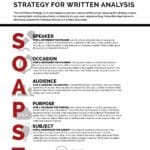History enthusiasts, embark on a journey through time with our comprehensive guide to understanding and utilizing historical data. Discover how to access, analyze, and visualize the past, gaining valuable insights into the forces that have shaped our world and offering glimpses into the future.
Exploring the Treasure Trove of Historical Data
Historical data isn’t just about dusty archives; it’s a dynamic resource that illuminates the past and informs the present. This guide explores what historical data is, where it resides, its diverse forms, how to interpret it, and the ethical considerations surrounding its use. Think of it as your roadmap to navigating the rich landscape of history.
What Exactly Is Historical Data?
Historical data comprises any information about past events or conditions. This vast category encompasses everything from financial records and scientific observations to personal narratives and cultural artifacts. It serves as the raw material for understanding the trajectory of human experience and the world around us.
Diving into the world of nuclear physics? Find out more about the fascinating device called a neutron separator that plays a crucial role in research and applications.
Uncovering the Diverse Types of Historical Data
Historical data manifests in a multitude of forms. Here’s a glimpse into its diverse nature:
- Financial Data: Stock prices, interest rates, and economic indicators offer a lens into past financial markets and economic forces.
- Economic and Demographic Data: Census records, birth rates, migration patterns, and inflation rates provide insights into population dynamics and the changing realities of daily life.
- Scientific Data: From ancient climate data preserved in ice cores to archaeological discoveries and historical medical records, scientific data unveils secrets of the natural world and human health.
Categorizing historical data by source provides another layer of understanding:
- Primary Sources: These firsthand accounts, like diaries, photographs, or original manuscripts, offer direct glimpses into the past.
- Secondary Sources: Building upon primary sources, secondary sources—such as textbooks, scholarly articles, or documentaries—provide interpretations, analyses, and valuable context.
Locating Historical Treasures: Key Data Sources
Numerous resources offer access to the wealth of historical data:
| Data Type | Example Sources |
|---|---|
| Financial | Publicly available financial records, company reports |
| Economic and Demographic | Government statistical agencies, academic datasets |
| Scientific | Research databases, archives of scientific institutions |
| Historical Archives | Libraries, museums, historical societies |
| Online Databases | Digital archives, specialized research platforms |
Decoding the Past: Data Formats and Access
Historical data exists in various formats, from ancient scrolls to digital databases:
- Digital Documents: Spreadsheets, PDFs, digitized text, and images provide readily accessible information.
- Physical Archives: Libraries, museums, and historical societies house physical documents, photographs, and artifacts.
- Specialized Formats: Specific fields, such as scientific research, often employ unique data formats.
Accessing these resources involves several approaches:
- Exploring Online Repositories: Many institutions have digitized their collections, making them readily available online.
- Utilizing APIs: Application Programming Interfaces (APIs) offer automated data retrieval for those comfortable with coding.
- Visiting Physical Archives: For a hands-on experience and access to unique materials, visiting libraries, archives, or museums is essential.
The Power of Historical Insights: Applications and Uses
Historical data offers a surprisingly wide range of practical applications:
- Understanding Trends: Analyzing historical data reveals long-term patterns, which can inform predictions about the future.
- Informing Decision-Making: Businesses utilize historical data for market research and product development, while policymakers rely on it to craft effective legislation.
- Preserving Cultural Heritage: Historical data plays a crucial role in understanding and appreciating the richness of human experience.
- Driving Research and Innovation: From medical breakthroughs to technological advancements, historical data often forms the basis for new discoveries.
Ethical Considerations in Handling Historical Data
Responsible use of historical data is paramount. Key ethical considerations include:
- Respecting Privacy: Protecting individual privacy, especially with sensitive information, through anonymization and aggregation is crucial.
- Acknowledging Bias: Recognizing and accounting for potential biases inherent in historical data is essential for cautious interpretation.
- Handling Sensitive Data with Care: Data concerning marginalized groups requires particularly sensitive handling to avoid perpetuating harm or discrimination.
Ongoing Exploration and Evolving Understandings
The study of historical data is a continuous journey. New discoveries, evolving interpretations, and ongoing research constantly reshape our understanding of the past. By approaching historical data with curiosity, respect, and a nuanced perspective, we can unlock valuable insights into the complex tapestry of human experience.
What is Historical Data? A Complete Guide with Examples
Historical data is any information gathered and recorded in the past. This can range from manually documented events in ancient texts to automatically generated data from modern digital systems. It exists in various formats—text, images, numbers, audio, video—and its relevance spans from recent events to ancient history. The “past” is relative, and the applicable timeframe depends on the context. Last year’s sales figures are historical data for a business, while ancient Roman scrolls are historical data for a historian. This flexibility makes historical data incredibly versatile and useful across many fields.
Understanding the Nature of Historical Data
One key characteristic of historical data is that it represents a snapshot in time. Unlike real-time data, which constantly updates, historical data is fixed, reflecting a specific moment or period. This static nature allows us to analyze past trends, patterns, and anomalies to inform present and future decisions. There are two main types of data to look at:
- Structured Data: Neatly organized information, typically found in databases and spreadsheets. Examples include sales figures, financial transactions, and sensor readings.
- Unstructured Data: Information that isn’t organized in a predefined manner, such as collections of letters, emails, photographs, or audio recordings.
Understanding this distinction is crucial for selecting appropriate analytical tools and methods.
Sources of Historical Data
Historical data comes from a variety of sources, both within and outside of organizations:
- Internal Sources: Data generated within an organization, including company databases, CRM systems, sales records, and financial statements. This data offers valuable insights into an organization’s past performance and operations.
- External Sources: Data collected outside an organization, such as government archives, academic research, market research reports, social media data, and news articles. External sources provide a broader perspective, including economic trends, demographic shifts, and social changes.
Why is Historical Data Important?
Historical data empowers informed decision-making by revealing past trends, patterns, and anomalies. From business strategies to scientific breakthroughs, historical data provides the context for understanding present and future outcomes. Its importance lies in its ability to:
- Reveal Trends and Patterns: By analyzing historical data, we can identify long-term trends, cyclical patterns, and recurring events. This allows for more accurate forecasting and proactive planning.
- Inform Decision-Making: Businesses use historical data for market analysis, product development, and strategic planning. Policymakers use it to craft effective legislation and understand the long-term impact of policy decisions.
- Evaluate Past Performance: Tracking past performance helps organizations identify successes, failures, and areas for improvement. This data-driven approach allows for continuous optimization and growth.
- Manage Risks: By analyzing past crises, incidents, and market fluctuations, organizations can identify potential risks and develop strategies to mitigate them.
How is Historical Data Used?
Historical data fuels a variety of analytical processes, including:
- Predictive Modeling: Building statistical models to forecast future outcomes based on past trends. This is commonly used in sales forecasting, demand planning, and risk assessment.
- Business Intelligence: Extracting insights from historical data to understand market dynamics, customer behavior, and competitive landscapes. These insights inform business strategies and drive better decision-making.
- Scientific Discovery: Analyzing large datasets to identify patterns, correlations, and anomalies that lead to new discoveries in fields like medicine, astronomy, and climate science.
- Historical Research: Historians use historical data to construct narratives, test theories, and deepen our understanding of past events and their influence on the present.
Ensuring Data Quality and Managing Data Effectively
The value of historical data hinges on its quality. Accurate, complete, and consistent data are essential for reliable analysis. Issues like missing data, errors, and biases can skew results and lead to incorrect conclusions. Proper data storage, retrieval, and management are critical for efficient utilization. This involves implementing robust data governance policies, secure data storage systems, and efficient data retrieval mechanisms.
Ongoing Research and Evolving Insights
The field of historical data analysis is constantly evolving. New techniques, methodologies, and technologies are emerging, enabling us to extract ever more nuanced insights from the past. Ongoing research is refining our understanding of historical trends, improving predictive models, and providing a deeper appreciation for the interconnectedness of past, present, and future.
Historic vs. Historical Data: Understanding the Difference and Usage
While the terms “historic” and “historical” are often used interchangeably, a subtle yet important distinction exists. Understanding this difference is key to using these terms accurately and effectively interpreting information about the past.
Defining the Terms
- Historic: Signifies a momentous or impactful event that significantly shaped the course of history. Think of events like the American Revolution, the invention of the printing press, or the landing on the moon. These events are often marked with celebrations, monuments, and significant recognition.
- Historical: Refers to anything from the past, regardless of its significance. This includes everyday occurrences, personal accounts, statistical records, and artifacts of all kinds. Essentially, if it happened in the past, it’s historical.
- Historical Data: Any data collected about past events and circumstances. This encompasses both “historic” moments and the vast array of less prominent events that make up the historical record. It can be quantitative (census data, financial records) or qualitative (diaries, letters, newspaper articles).
Why Does the Distinction Matter?
The distinction clarifies the scope of information being discussed. “Historic data,” while not technically incorrect, generally refers to data related to major events. “Historical data” is the broader, more encompassing term, referring to any data from the past, including that relating to historic events. This broader understanding is essential for researchers, analysts, and anyone working with information from the past.
The Importance of Historical Data
Historical data plays a vital role in a variety of fields:
- Business: Analyzing past sales, market trends, economic indicators, customer behavior, and operational efficiencies informs strategic planning, resource allocation, risk management, product development, and marketing campaigns.
- Research (Academic and Scientific): Historical data is fundamental to understanding social, political, economic, and scientific developments. It allows for pattern identification, hypothesis testing, trend analysis, and the development of robust theoretical frameworks.
- Personal Exploration: Genealogy research, understanding family histories, and exploring community archives are deeply enriched by access to historical data, providing a connection to the past and a sense of personal and collective identity.
Sources of Historical Data: Online and Offline
Vast troves of historical data are accessible both online and offline:
Online Databases:
- Data Archives: Organizations like the UK Data Service, ICPSR (Intergovernmental Panel on Climate Change Data Distribution Centre), and the World Bank Open Data offer vast collections of historical data across various disciplines.
- Specialized Research Platforms: JSTOR, Project MUSE, and other academic databases provide access to digitized historical documents, scholarly articles, and primary source materials.
Physical Archives:
- National and Local Archives: These institutions hold government records, land deeds, census data, military records, and other official documents.
- Libraries and Special Collections: University and public libraries often house historical manuscripts, rare books, photographs, and other archival materials.
- Museums and Historical Societies: These institutions preserve historical artifacts, documents, and oral histories related to specific regions, events, or individuals.
The Power of the Past: Applications of Historical Data
Historical data, spanning centuries of human activity, empowers informed decision-making in various sectors:
- Understanding the Present: Contextualizing current events and challenges by examining historical precedents and trends. This allows for a deeper understanding of the root causes of current issues and helps to predict future developments.
- Predicting the Future: By identifying recurring patterns and cycles in historical data, we can develop predictive models to anticipate future trends in areas like markets, climate, and social behavior.
- Preserving and Interpreting Cultural Heritage: Historical data is crucial for understanding and preserving the richness of human culture and history. It allows us to reconstruct past societies, interpret their values and beliefs, and learn from their triumphs and failures.
The Ever-Evolving Field of Historical Data
The study of historical data is a dynamic and evolving field. New discoveries, emerging methodologies, and advanced technologies continue to transform how we access, analyze, and interpret the past. Ongoing research continually refines our understanding of historical trends and offers ever more nuanced perspectives on the human story.
Unpacking the Past: Understanding the Meaning of Historical Details
Historical details are the building blocks of historical narratives, offering granular insights into past events, cultures, and individual lives. They are more than just raw facts or data points; they are the specific pieces of information that bring history to life, allowing us to understand the past on a deeper, more human level.
Defining Historical Details
Historical details are the specific pieces of information about the past, gleaned from various sources, which contribute to a comprehensive understanding of a historical event, period, or individual. They are the “brushstrokes” that add depth, color, and nuance to the broad sweeps of historical narratives. These details can be textual, material, visual, or oral, providing rich evidence of past lives and experiences.
Types of Historical Details and Their Sources
Historical details come in various forms, each offering a unique window into the past:
- Textual: Letters, diaries, legal documents, literature, newspapers, and other written materials provide firsthand accounts, personal perspectives, and official records of past events.
- Material Culture: Artifacts, architecture, clothing, tools, and other physical objects offer tangible evidence of past technologies, lifestyles, and cultural practices.
- Visual: Photographs, paintings, films, and other visual media capture moments in time, conveying information about appearances, environments, and social interactions.
- Oral: Interviews, stories, songs, and other forms of oral tradition preserve memories, perspectives, and cultural knowledge passed down through generations.
The Crucial Role of Context
Meaning in historical details isn’t inherent; it’s derived through careful analysis, contextualization, and interpretation. The same detail can hold vastly different meanings depending on its surrounding circumstances. Understanding the social, political, economic, and cultural context in which a detail arose is crucial for accurate interpretation.
Interpreting Historical Clues: A Process of Discovery
Uncovering the meaning in historical details involves a multi-faceted process:
- Sourcing: Identifying the origin and nature of the detail. Is it from a primary or secondary source? What are the potential biases or limitations of the source?
- Corroboration: Seeking out other evidence that supports or challenges the detail. Do other sources confirm or contradict the information?
- Contextualization: Placing the detail within its historical context. What were the social norms, political climate, and economic conditions of the time?
- Considering Bias: Recognizing and accounting for any potential biases in the source or in the historian’s own perspective.
- Drawing Inferences: Carefully drawing conclusions based on the available evidence, acknowledging that interpretations can evolve with new information.
Challenges and Limitations in Historical Interpretation
Historical inquiry is not without its challenges:
- The Incomplete Record: The historical record is often fragmented, incomplete, and biased, making definitive conclusions elusive. Lost documents, silenced voices, and deliberate destruction of evidence create gaps in our understanding.
- Subjectivity and Interpretation: Historians bring their own perspectives, experiences, and biases to the interpretation of historical details. Recognizing this subjectivity and engaging with multiple perspectives is essential.
- The Elusive Past: The past is, in many ways, unknowable with absolute certainty. We can only reconstruct it based on the available evidence, acknowledging the inherent limitations of our knowledge.
The Human Element of Historical Details
Historical details offer valuable insight into the human experience:
- Connecting with the Past: Details help us connect with the past on a human level, understanding the lives, experiences, emotions, and motivations of individuals who lived before us.
- Illuminating the Present: By studying the past, we gain valuable perspective on the present, recognizing recurring patterns, understanding the roots of current issues, and making more informed decisions about the future.
- Inspiring Further Inquiry: Engaging with historical details can spark curiosity, leading to further research, exploration, and a deeper appreciation for the complexity of human history.
Ongoing Research and New Perspectives
The field of history is constantly evolving. New discoveries, emerging methodologies, and interdisciplinary approaches offer fresh perspectives on the past. Ongoing research and open dialogue continually refine our understanding of historical details and their significance in shaping our world.
















